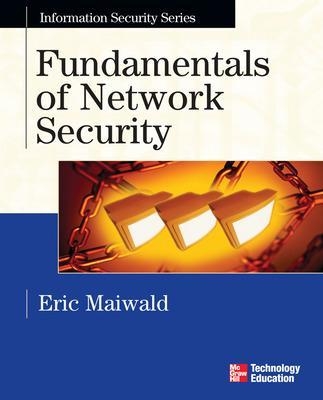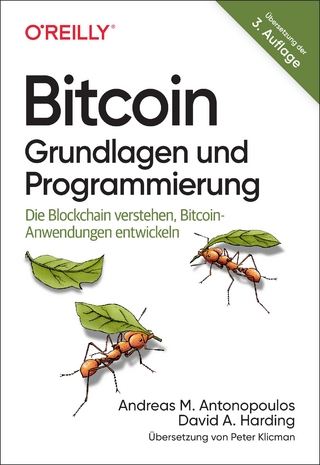
Fundamentals of Network Security
Osborne/McGraw-Hill (Verlag)
978-0-07-223093-2 (ISBN)
- Titel z.Zt. nicht lieferbar
- Versandkostenfrei
- Auch auf Rechnung
- Artikel merken
Publisher's Note: Products purchased from Third Party sellers are not guaranteed by the publisher for quality, authenticity, or access to any online entitlements included with the product.
This hands-on, project-based approach to the fundamentals of network security concepts and skills helps students understand security best practices, laws, and standards that will enable them to build a complete security program.This book introduces a strong foundation that includes security policy, planning, and development of good processes. A step-by-step design teaches students security implementation using recent advances in security tools, such as firewalls, VPN's, encryption, techniques, and intrusion detection devises. Platform-specific defenses are revealed for the desktop, Windows networks, UNIX, Internet, and wireless systems. Laws and government regulation are also covered, including the Patriot Act, homeland security initiatives, and special information on relevant state laws.
Eric Maiwald is a Research Vice President with Gartner, Inc. where he focuses on enterprise security infrastructure and mobility technologies. Mr. Maiwald has over twenty years of experience in information security where has worked as a security officer and consultant for large financial institutions, healthcare providers, services firms, and manufacturers. He has extensive experience in the security field performing assessments, policy development, architecture design, and product implementations. Mr. Maiwald holds a Bachelors of Science in Electrical Engineering degree from Rensselaer Polytechnic Institute and a Masters of Engineering in Electrical Engineering from Stevens Institute of Technology and is a Certified Information Systems Security Professional. He is a named inventor on patent numbers 5,577,209, “Apparatus and Method for Providing Multi-level Security for Communications among Computers and Terminals on a Network,” 5,872,847, “Using Trusted Associations to Establish Trust in a Computer Network,” 5,940,591 “Apparatus and Method for Providing Network Security,” and 6,212,636 “Method for Establishing Trust in a Computer Network via Association.” Mr. Maiwald is a regular presenter at a number of well-known security conferences. He has also written Security Planning and Disaster Recovery (with William Sieglein), and Fundamentals of Network Security, both published by Osborne/McGraw-Hill and is a contributing author for Hacking Linux Exposed, and Hacker’s Challenge also published by Osborne/McGraw-Hill.
PART I: Information Security Basics 1: What Is Information Security? 2: Types of Attacks 3: Hacker Techniques 4: Information Security Services PART II: Groundwork 5: Legal Issues in Information Security 6: Policy 7: Managing Risk 8: Information Security Process 9: Information Security Best Practices PART III: Security Technologies 10: Firewalls 11: Virtual Private Networks 12: Encryption 13: Intrusion Detection PART IV: Practical Applications and Platform-Specific Implementations 14: Desktop Protection 15: Unix Security Issues 16: Windows NT Security Issues 17: Windows 2000/ Windows 2003 Server Security Issues 18: Internet Architecture 19: E-Commerce Security Needs 20: Wireless Security
| Erscheint lt. Verlag | 16.11.2003 |
|---|---|
| Reihe/Serie | Information Security Series | McGraw-Hill Techology Education |
| Zusatzinfo | 94 Illustrations |
| Verlagsort | New York |
| Sprache | englisch |
| Maße | 185 x 229 mm |
| Gewicht | 1102 g |
| Themenwelt | Informatik ► Netzwerke ► Sicherheit / Firewall |
| Informatik ► Theorie / Studium ► Kryptologie | |
| ISBN-10 | 0-07-223093-2 / 0072230932 |
| ISBN-13 | 978-0-07-223093-2 / 9780072230932 |
| Zustand | Neuware |
| Informationen gemäß Produktsicherheitsverordnung (GPSR) | |
| Haben Sie eine Frage zum Produkt? |
aus dem Bereich


